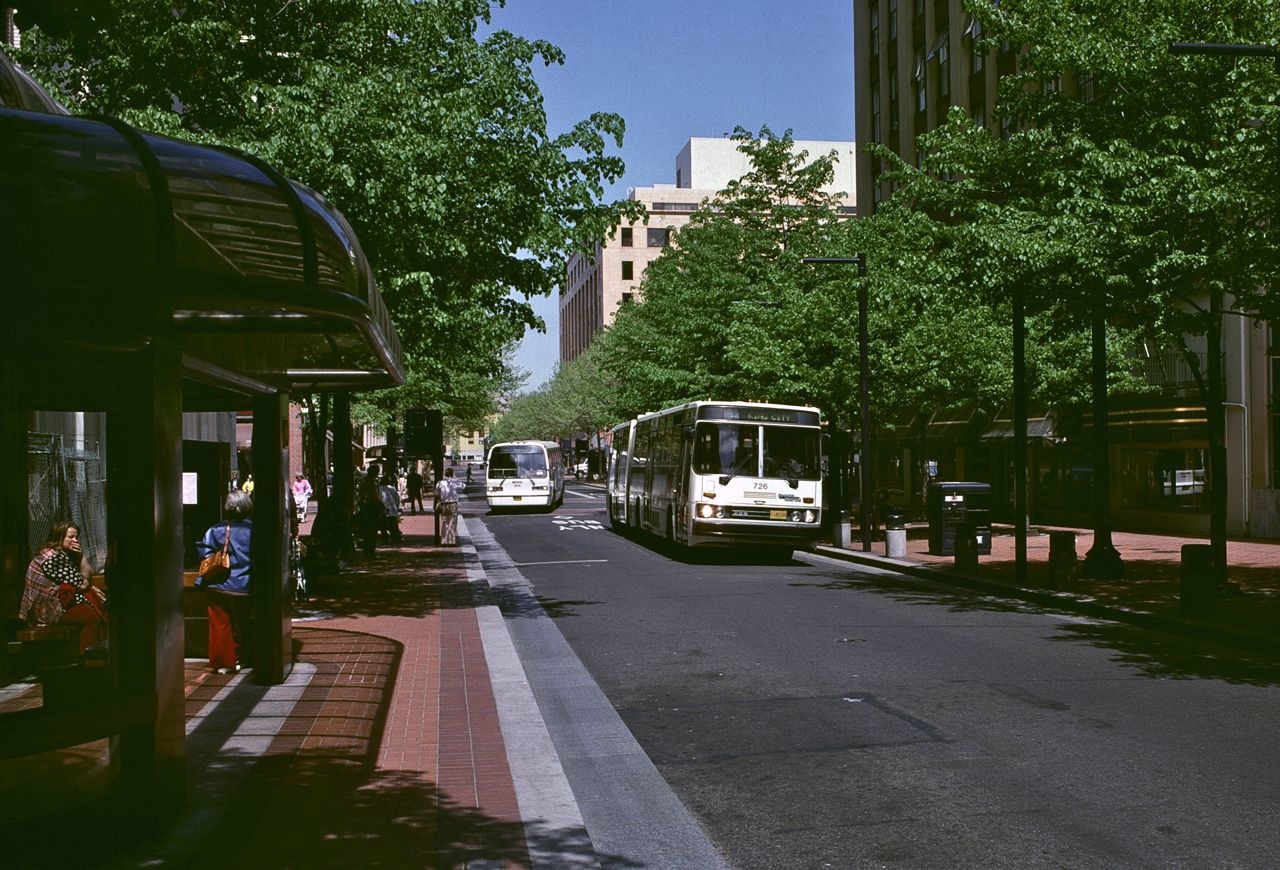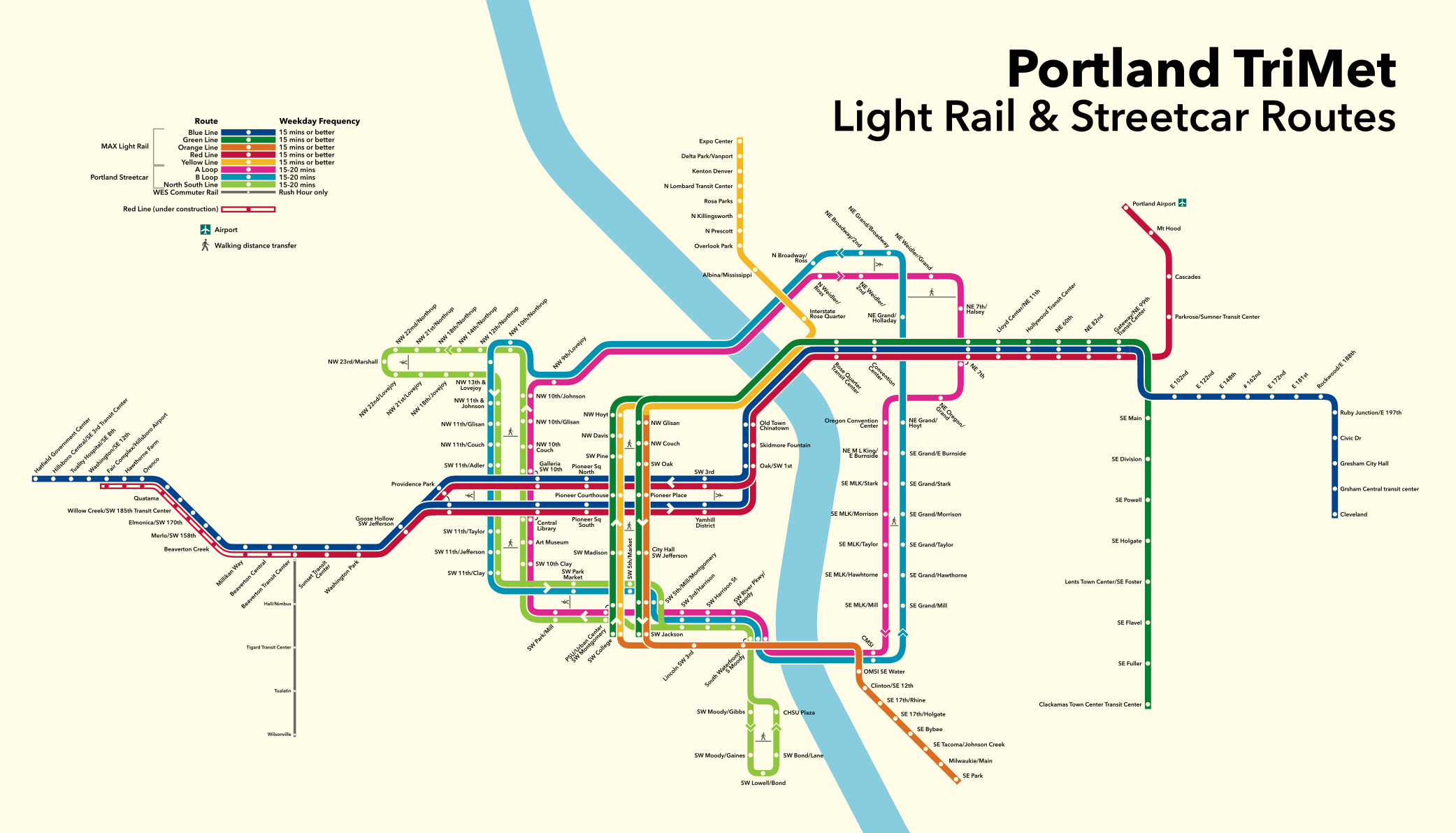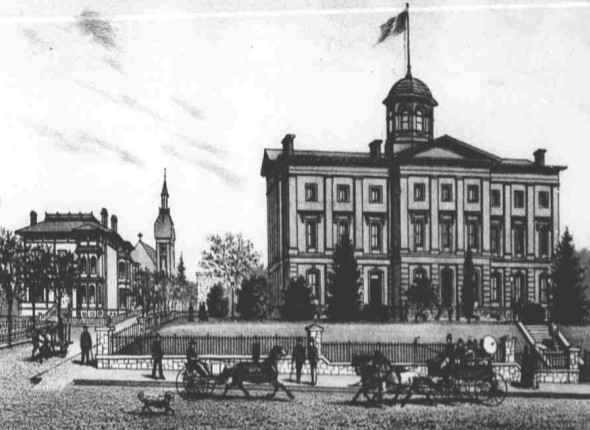|
Skip-stop
Skip-stop is a public transit service pattern which reduces travel times and increases capacity by having vehicles ''skip'' certain ''stops'' along a route. Originating in rapid transit systems, skip-stop may be also used in light rail and bus systems. "Skip-stop" is also used to describe elevators that stop at alternating floors and hence also used to describe building designs that exploit this design and avoid corridors on alternating floors. Rationale Skip-stop service is one solution to increasing train speed at minimal cost. In rapid transit systems in the United States, stations tend to be close together (approximately in 1976), and so trains struggle to reach high speeds. The New York City Subway for example, the slowest in the United States, travels at an average speed of . Trains on the same track cannot pass each other like buses can, and so to increase speed, changes can only be made in terms of headway, or in which stations are served. Skipping stations increa ... [...More Info...] [...Related Items...] OR: [Wikipedia] [Google] [Baidu] |
Skip-stop On The Chicago "L"
The Chicago "L" used skip-stop service, wherein certain trains would stop only at certain designated stations on a route, from 1948 to 1995. It was implemented as a way to speed up travel within a route, and was one of the Chicago Transit Authority's first reforms upon its assumption of the "L" operations. Background The main part of the Chicago "L" was built in stages between 1892 and 1900. Originally the purview of four private companies, those companies merged to form the Chicago Rapid Transit Company in 1924. There was very little spending on expanding rapid transit within the city from the 1910s to the 1930s, and by 1936 Manhattan had more miles of rapid transit than the entire city of Chicago despite having a tenth of the land area and a lower population. By the 1920s, the "L" was criticized for its mismanagement, in particular Chicago's lack of a subway system in contrast to other cities such as New York and Boston; construction of a subway was a plank of William Emmett ... [...More Info...] [...Related Items...] OR: [Wikipedia] [Google] [Baidu] |
Chicago "L"
The Chicago "L" (short for "elevated railway, elevated") is the rapid transit system serving the city of Chicago and some of its surrounding suburbs in the U.S. state of Illinois. Operated by the Chicago Transit Authority (CTA), it is the fourth-largest rapid transit system in the United States in terms of total route length, at long as of 2014, and List of United States rapid transit systems by ridership, the second-busiest rail mass transit system in the United States, after the New York City Subway. In 2016, the "L" had 1,492 rail cars, eight different routes, and 145 train stations. In , the system had rides, or about per weekday in . The "L" provides 24-hour service on the Red and Blue Lines and is one of only five rapid transit systems in the United States to do so.The four other rapid transit systems in the U.S. that provide 24-hour service in at least some parts of their systems are the New York City Subway, Staten Island Railway, PATH (rail system), PATH, and PATCO S ... [...More Info...] [...Related Items...] OR: [Wikipedia] [Google] [Baidu] |
Limited-stop
In public transit, particularly bus, tram, or train transportation, a limited-stop (or sometimes referred to as semi-fast) service is a trip pattern that stops less frequently than a local service. Many limited-stop or semi-fast services are a combination of commuter rail and express train. The term is normally used on routes with a mixture of fast and slow services, and can differ in meaning, depending on how it is used by different transit agencies. The main benefits of limited-stop or semi-fast services is the ability to utilise skip-stop calling pattern to maximise capacity along the line, as opposed to a commuter service stopping at every station which slows trailing express trains down. Railways On railways, the layout of the tracks and number and length of platforms at stations normally limit the extent to which a blend of fast/semi-fast/slow services can be operated. Australia In Australia, particularly in Brisbane and Sydney, limited stop services are formed by commut ... [...More Info...] [...Related Items...] OR: [Wikipedia] [Google] [Baidu] |
Portland Transit Mall
The Portland Transit Mall is a public transit corridor that travels north–south through the center of downtown in Portland, Oregon, United States. It comprises a pair of one-way streets—6th Avenue for northbound traffic and 5th Avenue for southbound—along which two of three lanes are restricted to transit buses and light rail vehicles only. , the corridor is served by the Green, Orange, and Yellow lines of MAX Light Rail; Frequent Express; and over a dozen local bus routes, all of which are services of TriMet, the transit agency operating within the Oregon side of the Portland metropolitan area. C-Tran, the transit agency for Clark County, Washington, additionally serves it with two express bus routes—#105 I-5 Express and #164 Fisher’s Landing Express. The transit mall was conceived as part of Portland's 1972 Downtown Plan. It opened in 1977 and until light rail trains were added in 2009, buses were the only transit vehicles using it. The mall was rebuilt and e ... [...More Info...] [...Related Items...] OR: [Wikipedia] [Google] [Baidu] |
C-TRAN (Washington)
C-Tran (stylized as C-TRAN), more formally the Clark County Public Transit Benefit Area Authority, is a public transit agency serving Clark County, Washington, United States, including the cities of Battle Ground, Camas, Vancouver, Washougal, and Yacolt. Founded in 1981, C-Tran operates fixed route bus services within Clark County, as well as paratransit services for qualified persons with disabilities (C-Van) and a dial-a-ride service in Camas, Ridgefield, and La Center (The Connector). C-Tran also provides express commuter services between Clark County and various points in Portland, Oregon, including downtown, the Parkrose/Sumner and Delta Park MAX Light Rail stations (in northeast and north Portland), Lloyd District, and Oregon Health and Science University. In , the system had a ridership of , or about per weekday as of . C-Tran operates three transit centers: Vancouver Mall, Fisher's Landing in east county, and 99th Street at Stockford Village, as well as t ... [...More Info...] [...Related Items...] OR: [Wikipedia] [Google] [Baidu] |
TriMet
TriMet, formally known as the Tri-County Metropolitan Transportation District of Oregon, is a public agency that operates public transport, mass transit in a Transportation in Portland, Oregon, region that spans most of the Portland metropolitan area in the U.S. state of Oregon. Created in 1969 by the Oregon Legislative Assembly, Oregon legislature, the district replaced five private bus companies that operated in the three counties: Multnomah County, Oregon, Multnomah, Washington County, Oregon, Washington, and Clackamas County, Oregon, Clackamas. TriMet started operating a light rail system, MAX Light Rail, MAX, in 1986, which has since been expanded to five lines that now cover , as well as the WES Commuter Rail line in 2009. It also provides the operators and maintenance personnel for the Portland, Oregon, city of Portland-owned Portland Streetcar system. In , the system had a ridership of , or about per weekday as of . In addition to rail lines, TriMet provides the region ... [...More Info...] [...Related Items...] OR: [Wikipedia] [Google] [Baidu] |
Portland, Oregon
Portland (, ) is a port city in the Pacific Northwest and the largest city in the U.S. state of Oregon. Situated at the confluence of the Willamette and Columbia rivers, Portland is the county seat of Multnomah County, the most populous county in Oregon. Portland had a population of 652,503, making it the 26th-most populated city in the United States, the sixth-most populous on the West Coast, and the second-most populous in the Pacific Northwest, after Seattle. Approximately 2.5 million people live in the Portland metropolitan statistical area (MSA), making it the 25th most populous in the United States. About half of Oregon's population resides within the Portland metropolitan area. Named after Portland, Maine, the Oregon settlement began to be populated in the 1840s, near the end of the Oregon Trail. Its water access provided convenient transportation of goods, and the timber industry was a major force in the city's early economy. At the turn of the 20th centu ... [...More Info...] [...Related Items...] OR: [Wikipedia] [Google] [Baidu] |
MAX Light Rail
The Metropolitan Area Express (MAX) is a light rail system serving the Portland metropolitan area in the U.S. state of Oregon. Owned and operated by TriMet, it consists of five color-designated lines that altogether connect the six sections of Portland; the communities of Beaverton, Clackamas, Gresham, Hillsboro, Milwaukie, and Oak Grove; and Portland International Airport to Portland City Center. Service runs seven days a week with headways of between 30 minutes off-peak and three minutes during rush hours. In 2019, MAX had an average daily ridership of 120,900, or 38.8 million annually. Due to the COVID-19 pandemic, which impacted public transit use globally, annual ridership plummeted, with only 14.8 million riders recorded in 2021. MAX was among the first second-generation American light rail systems to be built, conceived from freeway revolts that took place in Portland in the early 1970s. Planning for the network's inaugural eastside segment, the ... [...More Info...] [...Related Items...] OR: [Wikipedia] [Google] [Baidu] |
Seattle, WA
Seattle ( ) is a seaport city on the West Coast of the United States. It is the seat of King County, Washington. With a 2020 population of 737,015, it is the largest city in both the state of Washington and the Pacific Northwest region of North America. The Seattle metropolitan area's population is 4.02 million, making it the 15th-largest in the United States. Its growth rate of 21.1% between 2010 and 2020 makes it one of the nation's fastest-growing large cities. Seattle is situated on an isthmus between Puget Sound (an inlet of the Pacific Ocean) and Lake Washington. It is the northernmost major city in the United States, located about south of the Canadian border. A major gateway for trade with East Asia, Seattle is the fourth-largest port in North America in terms of container handling . The Seattle area was inhabited by Native Americans for at least 4,000 years before the first permanent European settlers. Arthur A. Denny and his group of travelers, subsequent ... [...More Info...] [...Related Items...] OR: [Wikipedia] [Google] [Baidu] |
Bus Lane
A bus lane or bus-only lane is a lane restricted to buses, often on certain days and times, and generally used to speed up public transport that would be otherwise held up by traffic congestion. The related term busway describes a roadway completely dedicated for use by buses. Bus lanes are a key component of a high-quality bus rapid transit (BRT) network, improving bus travel speeds and reliability by reducing delay caused by other traffic. A dedicated bus lane may occupy only part of a roadway which also has lanes serving general automotive traffic; in contrast to a transit mall which is a pedestrianized roadway also served by transit. History The first bus lane is often erroneously attributed to Chicago, where in 1939 Sheridan Road was installed with reversible lanes north of Foster Avenue. The setup consisted of three-lanes towards the peak direction (south in the morning; north in the evening), and one contraflow lane. None of the lanes exclusively carried buses, b ... [...More Info...] [...Related Items...] OR: [Wikipedia] [Google] [Baidu] |
.gif)





.jpg)

